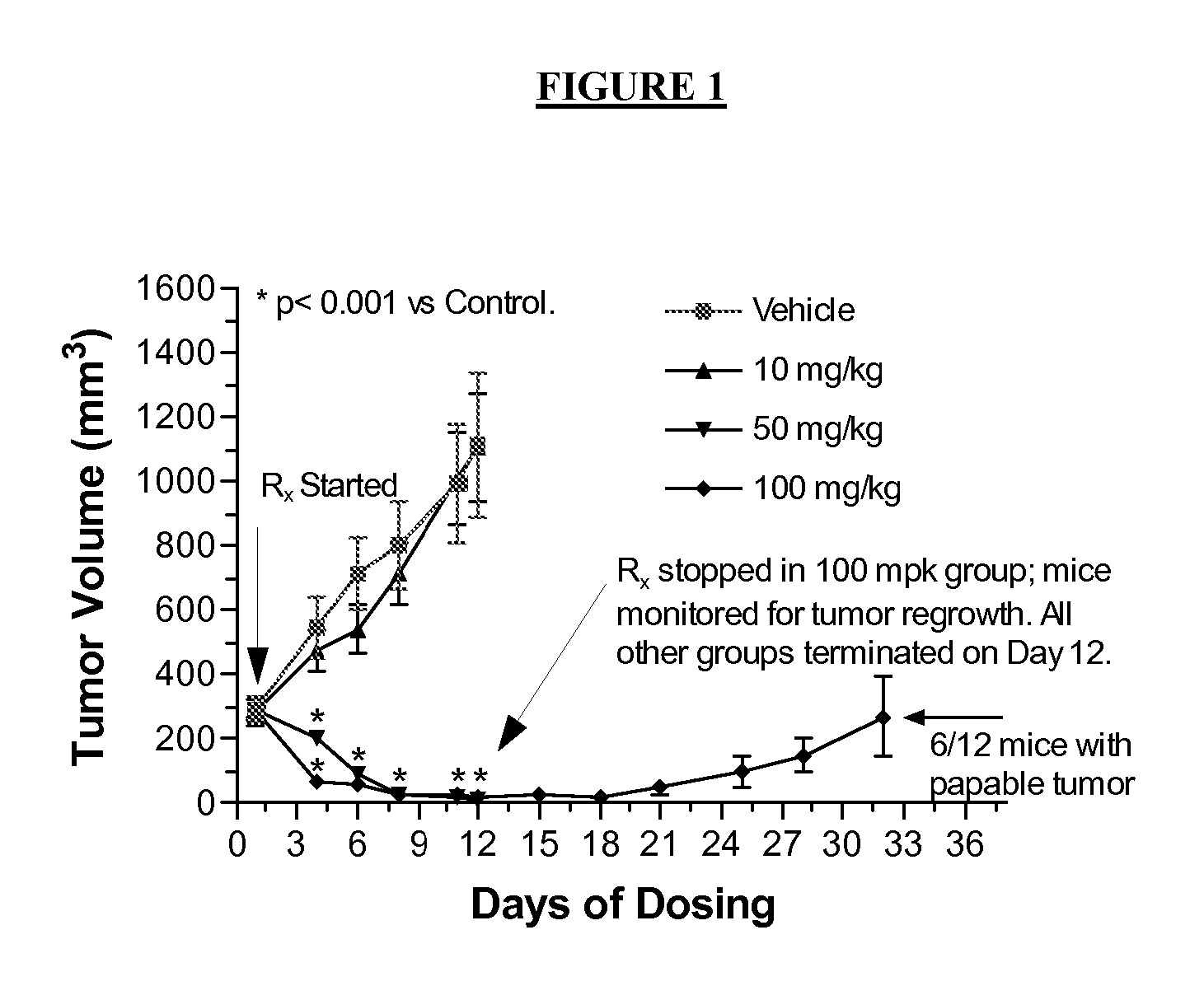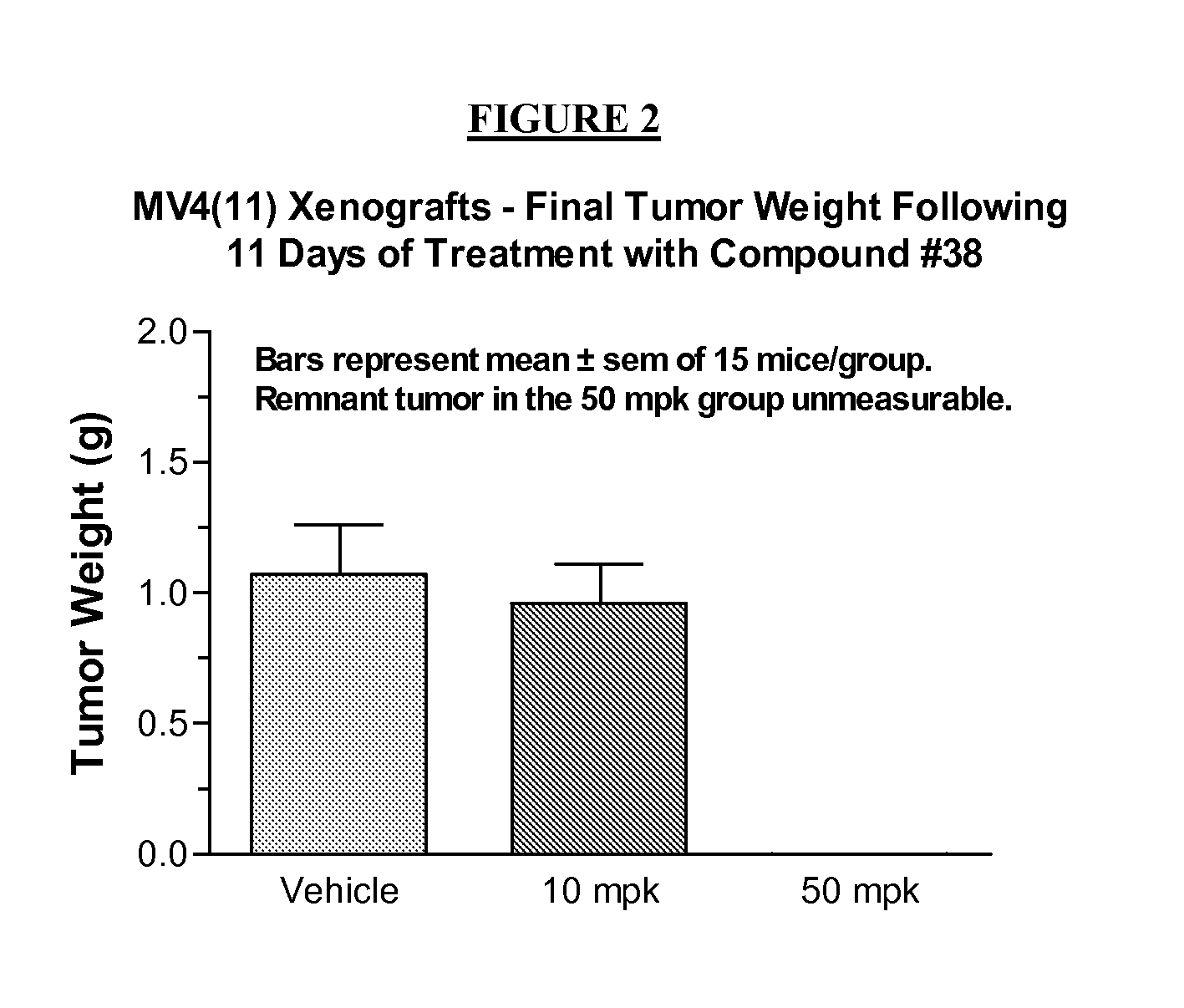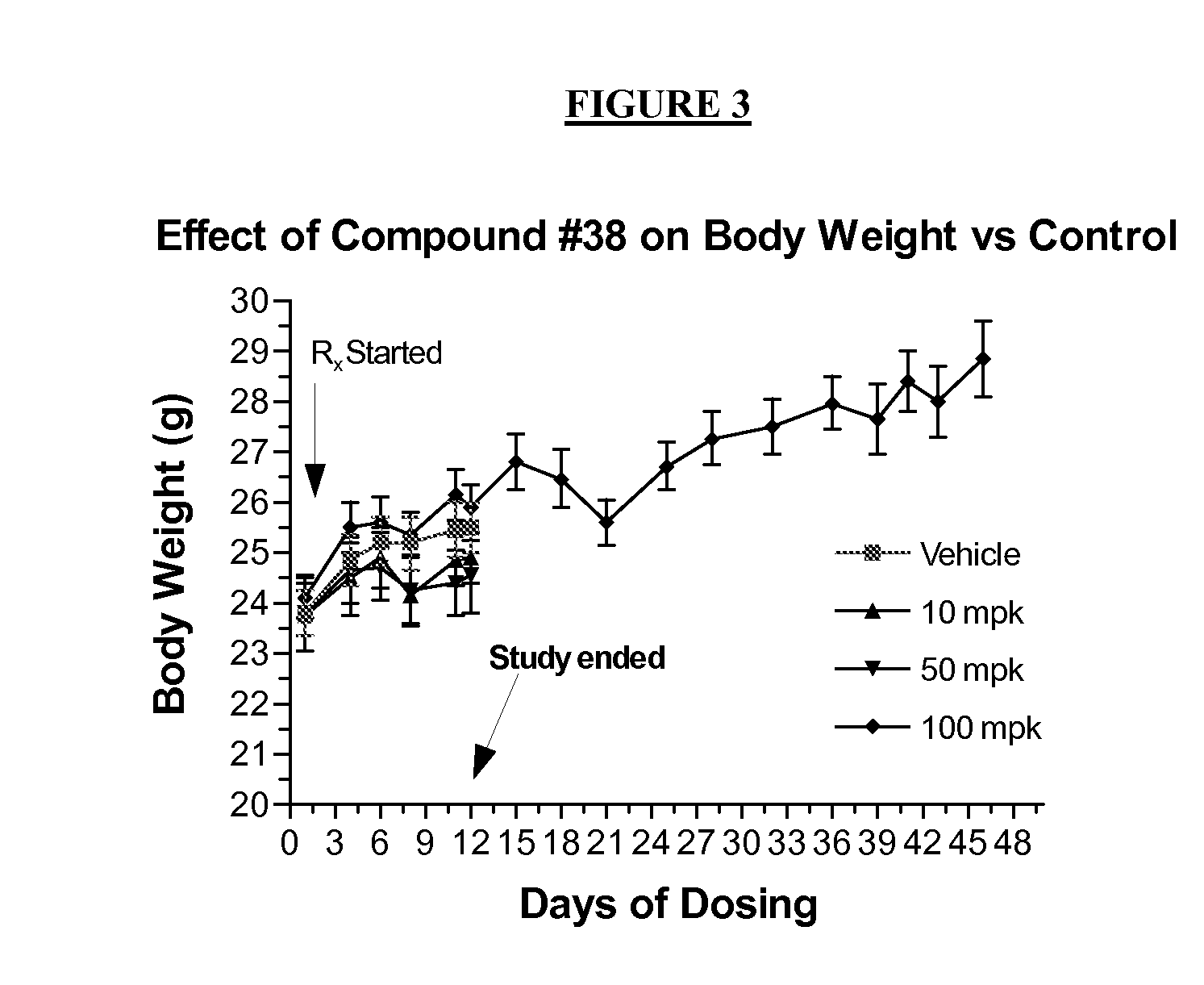Method of inhibiting flt3 kinase
a kinase activity and inhibitor technology, applied in the field of reducing or inhibiting the kinase activity of flt3, can solve the problems of decreased remission time and disease free survival of patients with flt3 mutations, and poor prognosis of patients, and achieve the effect of reducing or inhibiting the kinase activity of flt3
- Summary
- Abstract
- Description
- Claims
- Application Information
AI Technical Summary
Benefits of technology
Problems solved by technology
Method used
Image
Examples
embodiments
[0089] Embodiments of the present invention include a compound of Formula I wherein: [0090] a) A is [0091] phenyl or pyridyl, either of which may be substituted with one of chloro, fluoro, methyl, —N3, —NH2, —NH(alkyl), —N(alkyl)2, —S(alkyl), —O(alkyl), or 4-aminophenyl; [0092] b) A is [0093] phenyl; [0094] c) W is [0095] pyrrolyl (including 1H-pyrrol-2-yl), imidazolyl, (including 1H-imidazol-2-yl), isoxazolyl, oxazolyl, 1,2,4 triazolyl, or furanyl (including furan-2-yl), any of which may be connected through any carbon atom, wherein the pyrrolyl, imidazolyl, isoxazolyl, oxazolyl, 1,2,4 triazolyl, or furanyl may contain one —Cl, —CN, —NO2, —OMe, or —CF3 substitution, connected to any other carbon; [0096] d) W is [0097] furan-2-yl, 1H-pyrrol-2-yl, or 1H-imidazol-2-yl, any of which may be substituted at the 4 or 5 carbons with —CN; [0098] e) W is [0099] 3H-2-imidazolyl-4-carbonitrile or 5-cyano-1H-pyrrol-2-yl; [0100] f) W is [0101] 3H-2-imidazolyl-4-carbonitrile; [0102] g) R2 is [0103...
example 1
5-Cyano-furan-2-carboxylic acid
[0359]
[0360] To a flask with a stir bar and Vigreaux column under Ar was added 2-formyl-5-furancarboxylic acid (2.8 g, 20 mmol), hydroxylamine hydrochloride (2.7 g, 40 mmol), and dry pyridine (50 mL). The mixture was heated to 85° C., acetic anhydride (40 mL) was added and the mixture was stirred for 3 h. After cooling to 60° C., water (250 mL) was added and the mixture was stirred at RT for 70 h. The mixture was acidified to pH 2 with concentrated hydrochloric acid and extracted with 3:1 dichloromethane-isopropanol (8×100 mL). The combined organic layers were washed with water (100 mL), brine (100 mL), dried over anh sodium sulfate and concentrated in vacuo to afford the title compound as a tan solid (1.26 g, 46%). 1H-NMR NMR (CD3OD; 400 MHz): δ 14.05 (br s, 1H), 7.74 (d, 1H, J=3.8 Hz), 7.42 (d, 1H, J=3.8 Hz).
example 2
4-Cyano-1H-pyrrole-2-carboxylic acid
[0361]
[0362] The title compound was prepared by the literature procedure (Loader and Anderson, Canadian J. Chem. 59: 2673 (1981)). 1H-NMR (CDCl3; 400 MHz): δ 12.70 (br s, 1H), 7.78 (s, 1H), 7.13 (s, 1H).
PUM
 Login to View More
Login to View More Abstract
Description
Claims
Application Information
 Login to View More
Login to View More - R&D
- Intellectual Property
- Life Sciences
- Materials
- Tech Scout
- Unparalleled Data Quality
- Higher Quality Content
- 60% Fewer Hallucinations
Browse by: Latest US Patents, China's latest patents, Technical Efficacy Thesaurus, Application Domain, Technology Topic, Popular Technical Reports.
© 2025 PatSnap. All rights reserved.Legal|Privacy policy|Modern Slavery Act Transparency Statement|Sitemap|About US| Contact US: help@patsnap.com



